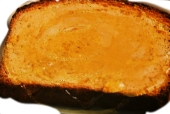Gerry,
The rotary switch must be connecting either the voltage to the tracker or directly to the motor for manual control.
If you can follow the wiring on the rotary switch you should be able to trace the path and replicate it. Here's a typical way to control direction on a motor.
This was one of the simplest diagrams I could find to explain direction control. On your Suntracker circuit they're doing this with scr's or triacs. Triacs are typical as they are bidrectional current devices but SCR's only allow current flow in one direction. Triacs are more common on AC motor controllers.
https://engineersgarag.wpengine.com/wp-content/uploads/2019/07/Image-Showing-H-Bridge-Circuit-Used-Controlling-Direction-Rotation-DC-Motor.jpg
If you can trace the wiring throught he rotary switch yuo'll be able to figure which way the control signal goes to run the motor. A good multi meter and a lot of patience. The rotary switches are usually fairly consistent in their layouts for in/out connections.
Sometimes you can use contact cleaner and temporarily "restore" the functionality of rotary switches to at least be ble to map out the proper connections
B.




